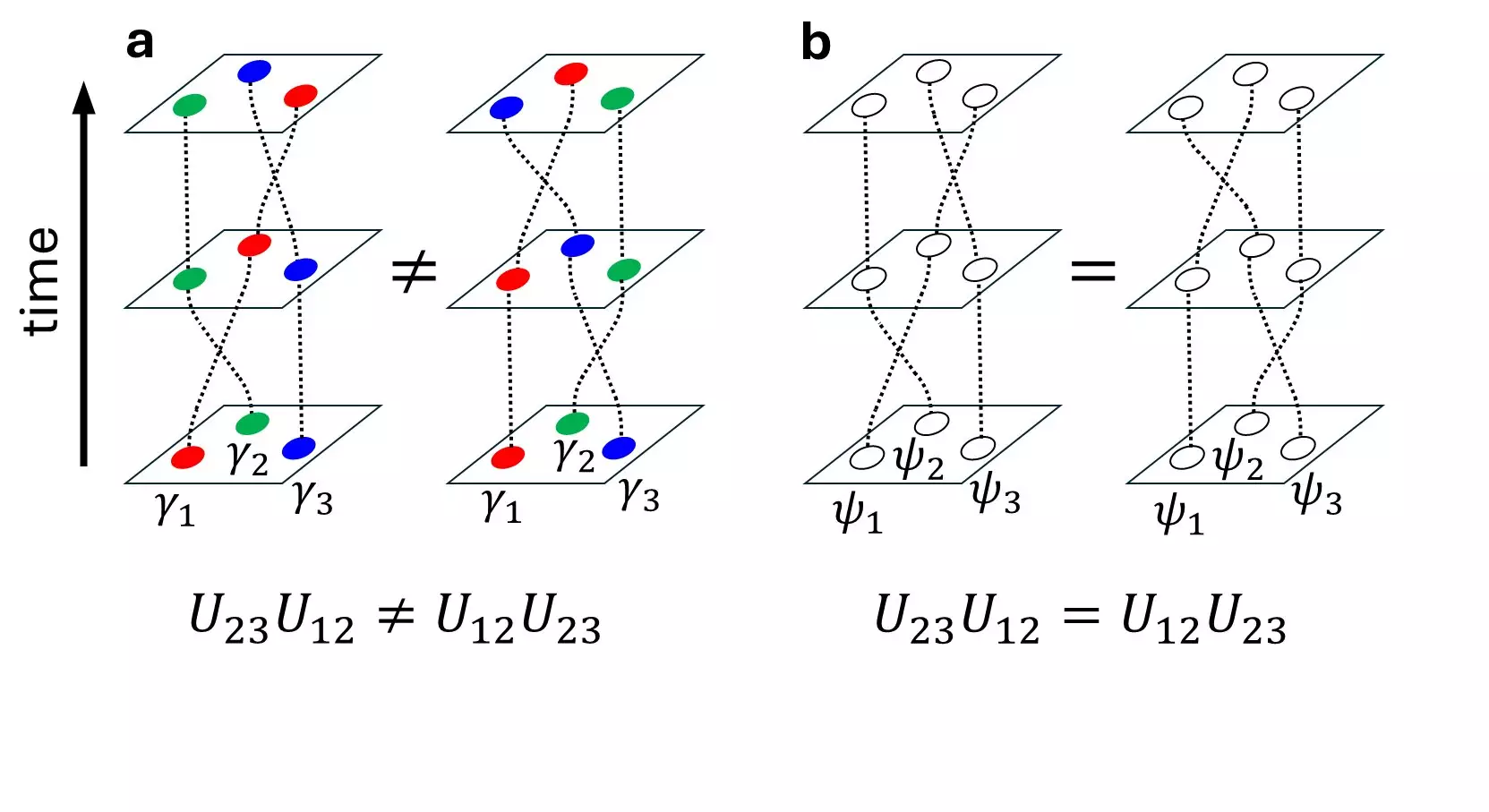Recent advancements in quantum computing have gained significant momentum with the discovery of multiple Majorana zero modes (MZMs) within a single vortex of the superconducting topological crystalline insulator SnTe. This groundbreaking work, led by a collaborative research team from the Hong Kong University of Science and Technology (HKUST) and Shanghai Jiao Tong University (SJTU), begins to unravel the complexities that stand in the way of practical quantum computers. The innovative coupling control achieved through crystal symmetry highlights a pivotal step towards the realization of fault-tolerant quantum computation.
At the heart of this research lies the concept of Majorana zero modes, which are zero-energy quasiparticles exhibiting remarkable properties, most notably their adherence to non-Abelian statistics. Unlike conventional particles, the braiding of MZMs allows for unique interactions that don’t result in a singular state following a sequence of exchanges. This unique trait imbues MZMs with the potential to offer protection against local perturbations, a vital requirement for stable and fault-tolerant quantum computation. The implications of MZMs are profound, as they could serve as a backbone for advanced quantum computing systems, reflecting a key goal in the ongoing quest for more reliable quantum architectures.
Despite exciting advancements in the engineering of artificial topological superconductors, manipulating and braiding MZMs has remained a daunting challenge. The primary issue stems from the real-space separation of these quasiparticles, making the processes needed for their hybridization complex and fraught with difficulties. Conventional approaches have often fallen short in overcoming these obstacles, leading to a call for novel techniques that can bypass these limitations, which this research has effectively addressed by leveraging the distinctive features offered by crystal symmetry.
The research team took a revolutionary approach by investigating the presence of magnetic-mirror-symmetry-protected MZMs within the SnTe vortex. Utilizing a combination of theoretical simulations and meticulous experimental techniques, they successfully demonstrated the existence and hybridization of these MZMs without necessitating real-space movements or relying on the intensification of magnetic fields. This was made possible through the application of low-temperature scanning tunneling microscopy and high-quality sample growth techniques, alongside large-scale numerical simulations.
The experimental group at SJTU made compelling observations, noting significant variations in the zero-bias peak—a hallmark sign of Majorana modes—within the SnTe/Pb heterostructure. This finding was corroborated by the theoretical team’s extensive numerical simulations, which validated that the anisotropic responses observed were indeed linked to the presence of crystal-symmetry-protected MZMs. The integration of methods, such as the kernel polynomial technique, allowed the researchers to explore complex vortex systems, broadening the horizons for new properties associated with MZMs beyond merely the crystal symmetry aspect.
The discoveries made by this research team have far-reaching implications. They signify not only a leap in our understanding of crystal-symmetry-protected multiple MZMs but also lay the groundwork for practical applications in quantum computing. The realization of robust and fault-tolerant quantum bits—topological qubits—will likely depend on our ability to fabricate and control these MZMs under more practical conditions.
As researchers continue to refine methodologies surrounding the detection and manipulation of MZMs, we find ourselves on the precipice of an exciting new frontier in quantum technology. The potential for experimental confirmation of non-Abelian statistics, alongside the construction of innovative types of quantum gates, raises the prospect of a new era in computational capabilities, where the reliability and efficiency of quantum systems are substantially enhanced.
The identification and manipulation of multiple Majorana zero modes in SnTe mark a significant milestone in the ongoing pursuit of fault-tolerant quantum computing. The blend of theoretical exploration and experimental validation elucidates a path forward, potentially revolutionizing the landscape of quantum technologies. As research progresses, the implications of these findings may very well redefine what is possible within the realm of quantum computation, pointing towards a future underscored by unprecedented capabilities and stability.


Leave a Reply